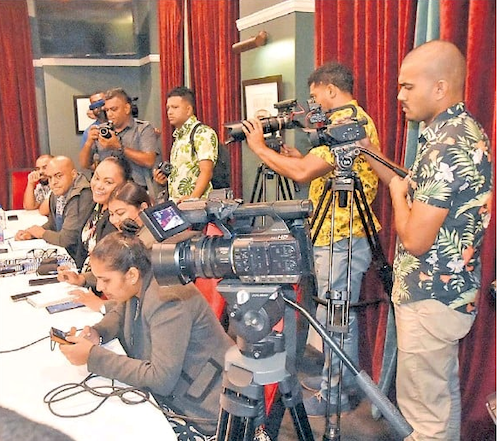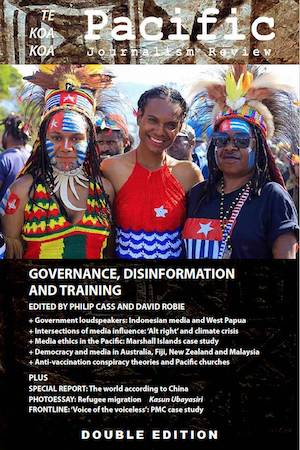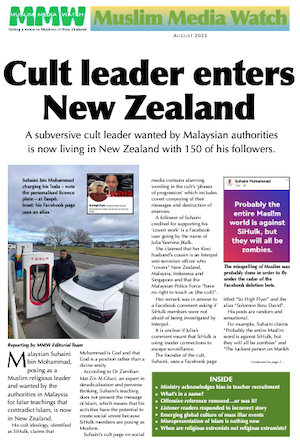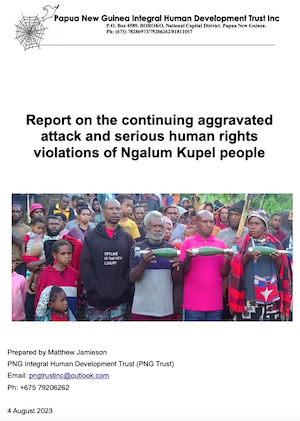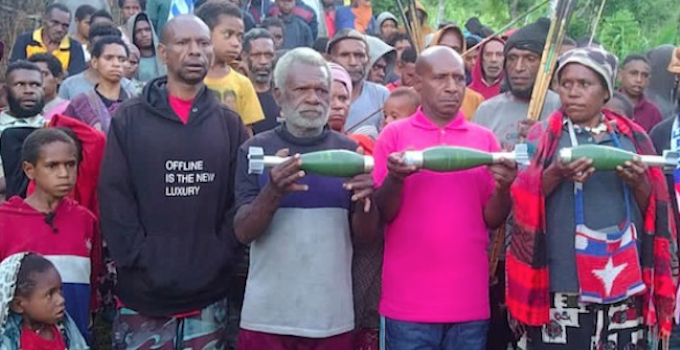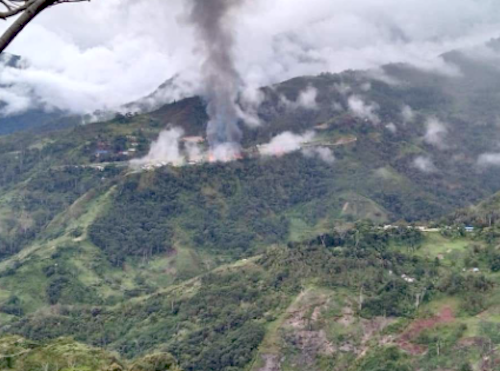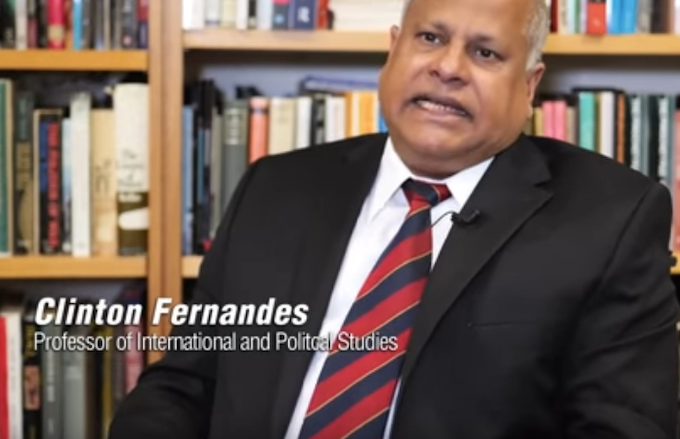It’s been well over a year now since the health scare dubbed the Covid-19 pandemic has had any widespread impact upon the lives of the vast majority of humanity. Since the “fog of war” has lifted, so to speak, there has been very little introspection regarding the knee-jerk authoritarianism imposed upon humanity in the liberal press or mainstream academia. Eerie parallels connect the panic stirred up during the health crisis with the reaction to 9/11. There is also plenty of circumstantial evidence of prior knowledge and pre-planning for both of these events. In their wake, mass hysteria, government propaganda, tyranny, censorship, and irrational belief systems spawned out of each, supported by ruling class interests and mass media mouthpieces.
Although many policies related to the global war on terror and the pandemic certainly have fascistic and totalitarian impulses, there are key differences. Whereas the fascist and totalitarian rely on a single despot, and the marginalization of minority groups, postmodern tyranny operates according to the flows of late capitalism: diversity and inclusion are encouraged; power is spread through a corporate oligarchy, as well as political, military, and now medical hierarchies; and devastating economic and social effects are engendered by “absent causes”; i.e., abstract engines of capital: stock fluctuations, algorithms, financial instruments and various Finance/Insurance/Real Estate (FIRE) sector bubbles and scams. The public is predictably bewildered by a revolving cast of bureaucrats and elites with varying amounts of sociopathic and narcissistic traits; however, the personal attributes of the cast members are extraneous to capital accumulation, imperialism, and the liquidation of nature. It is fine to use phrases like fascist or totalitarian in response to government policies for rhetorical effect; however, most Americans do not feel that way or use that terminology, which harkens back to a simpler era of boot stamping. We are rather enmeshed in a dictatorship of capital.
A related aspect of what we may call postmodern tyranny is the absence of metanarratives. The establishment props up whatever narrative suits their interest in the moment, but is able to cast them off at the first serious grumblings from the public. From about 2001-2011, the global war on terror dominated; from 2011-2016, it was “regime change” in Syria and Libya with a little ISIS and feigned horror at Russia taking Crimea sprinkled in; from 2016-2020, the overblown Russiagate connection; from 2020-2022, Covid-19; and now the Ukraine-Russia war, in which we are told NATO and the US are completely innocent allies who did not start, provoke, and manipulate the geopolitical chessboard going back decades, and who only want to assist the helpless Ukrainians.
Yet after two years of being subjected to the tyrannical orders of an authoritarian medical panic orchestrated by the ruling classes, transnational political puppets, as well as the establishment medical “experts” who espoused fraudulent and laughable claims over and over, people worldwide are waking up to the health scare as well as the US proxy war in Ukraine. There are many striking similarities between the 9/11 false flag attack and the Covid-19 global health freak-out. Both events led to mass hysteria and a globalized form of ostrich syndrome, where denial and collective hallucination became the norm, paving the way for deeper imperial tyranny and mass obedience. Recently, many who supported government policies and narratives including lockdowns, travel bans, vaccine mandates, and health passports are asking for “Pandemic Amnesty” regarding their panic-inducing and tyrannical behavior; and admitting they were dead wrong, even as they championed ridiculous and deadly policies and demonized anyone who tried to stand in their way.
Revisiting the “Catalyst”
The parallels between government reactions to 9/11 and the Sars-CoV-2 pandemic are uncanny. Prior to 9/11, a sizable chunk of US citizens would not have put up with domestic mass surveillance. Similarly, prior to the health crisis of 2020, populations would have been very skeptical of mandatory lockdowns, absurd masking rules, and coercive vaccine mandates and propaganda; as well as blocking off access to travel, public spaces, and businesses with vaccine passports. Most interpret this as government exploiting a crisis, rather than governments’ prior knowledge and pre-planning of the events. However, from the start, the ready-made, manufactured hysteria and propaganda suggests a collusion of military-intelligence, industrial, financial, and medical forces of industry and government.
The economic indicators had been blinking red for months before even January of 2020, going back to the repo crisis of September 2019. Quoting an investor in CNBC from March 2020:
‘The virus was the catalyst but it’s not the cause,’ said Christopher Whalen, founder of Whalen Global Advisors. ‘Both bonds and equities were inflated rather dramatically by our friends at the Fed. You’re seeing the end game for monetary policy here, which is at a certain point you have to stop. Otherwise you get grotesque asset bubbles like we saw, and the engine just runs out of fuel.’ [Emphasis mine]
Reuters concurs, with a major figure at the Fed blurting the quiet part out loud: “Pandemic aid was also ‘banking bailout‘”. The liberal/left site The Intercept sums up the game quite well, explaining that the CARES Act of March 2020 allows for:
Direct purchases of corporate debt — the first nongovernment bond-buying in the Fed’s history — would now be allowed. Companies have swelled their borrowing in recent years, and experts have identified this as a source of serious economic risk. A sudden shock like the pandemic that wiped out revenues would not only cause bankruptcies, but also accelerate bond defaults, broadening stress throughout the financial system.
Further on in the piece, the author notes how the CARES Act calls for an “Exchange Stabilization Fund”. Worth 454 billion, the money is leveraged just like a major bank, allowing for:
A $4.5 trillion slush fund would be created, equity markets ballooned. The total value of the stock market cratered to 103 percent of GDP, about $21.8 trillion, on March 23. By April 30 it was back to 136.3 percent of GDP, or $28.9 trillion. By that metric, $7.1 trillion in stock market wealth has been created in that period.
In other words, the US saw the writing on the wall coming from China: the economic slowdown and shuttering of factories which began in January 2020 was finally affecting the US stock market, which had cratered by mid-March 2020. Only the exaggeration of a pandemic, a sloughing off of millions of jobs, and new spigots opening for the banking sector, would allow for corporations to maintain profitability. Debt restructuring was inevitable and the only way to accomplish this was to railroad legislation through Congress, not a difficult task considering our lawmakers are essentially lobbyists for major multinational corporations. Large companies got billions in aid while workers and small businesses fell into ruin.
Once the medical agenda was set, panic set in, and it turns out overcrowding nursing homes, firing one million medical workers and 40 million total US workers, blaring apocalyptic propaganda non-stop, censoring any talk of vitamin and supplement use, imposing stressful lockdowns, and turning patients away from doctors can have an effect on worldwide mortality. Hardly anyone in the medical community was willing to confront those inconvenient truths, and those that did were censored further.
It was known very soon after March 2020 what the infection fatality rate would be: a very low percentage, perhaps twice the rate from seasonal influenza. World elites did not care- they had an agenda in hand. Regardless of the seriousness, capitalist elites wouldn’t have put 40 million Americans out of work and imploded the economy without a plan. And they had one ready-made: a 5 trillion dollar plan. Later on, US elites would not have advocated for coercive vaccine mandates – get the shot or lose your job – unless the word came down from the very highest echelons of the elite, and although many, if not most, of the establishment bought it wholesale, it’s clear that the federal government was not going to leave states to make decisions based off the inputs of local county and state health officials. The word came down from on high; there certainly was obvious collusion to centralize and organize the Covid dogma, yes, a “conspiracy”, because asking the public to “trust the science” only takes you so far when conflicting and contradictory data about the danger of the virus is staring them right in the face.
Given the unreliability of the initial tests for Sars-CoV-2, the deliberate use of too many PCR cycles per test, and the simple fact that it’s quite probable that multiple benign strains and variants of coronaviruses resulted in positive tests, it’s easy to see how a global pandemic was manufactured at the outset. From the very beginning, government propaganda emanating from the medical, military, and intelligence establishments were obviously coordinated, centralized, and directed to coerce and cow citizens into submission to a globalized, medical cult. Local and national news all parroted the same line, and a global groupthink biosecurity agenda was pushed to the forefront of society. It’s important to remember that before the declared emergency, to “quarantine” involved restricting access to the sick, not the whole of society.
The language was not only Orwellian, but was written from scripts in the Department of Defense and Intelligence community. We were told to “shelter in place”, and doctors and nurses were on the “frontlines” of the fight. These were certainly designed to conjure images of war and create an impassioned atmosphere where dissent was marginalized, repeating the lockstep ideological conformity that occurred after 9/11. Phrases like social distancing and contact tracing entered the lexicon with barely a grumble. Hilariously, after more than a year of putting up with absurd and ever-changing laws, Britain toyed with the idea of offering its citizens “Freedom Passes” for those compliant enough to test frequently, their reward being the “freedom” to leave their own home.
Canadian and British reporting confirms the unethical propaganda to coerce, scare, and guilt-trip civilian populations. One UK psychologist dubbed their government program “totalitarian”. Every mainstream news outlet in the US from March 2020 to February 2022 resembled a liberal version of the Sinclair broadcasting scandal from 2018, where the media conglomerate, which has a known right-wing bias, made 193 local news anchors repeat the same minute-long script, word-for-word, warning of “false news” and “fake stories” proliferating on social media and mainstream news, echoing Trump’s rhetoric at the time.
Natural immunity was scoffed at, gathering in public was outlawed, visitors to households were forbidden, a vaccine was deemed to be the only response to the threat, and even health advocates who gave common-sense reminders to take vitamins and supplements were derided as unserious crackpots.
A pertinent question to think about is this: given the uptick in supposed deaths from Sars-CoV-2 around March 2020, was a global upheaval of lockdowns, travel restrictions, limited movement outside one’s home, and caps on gatherings justified? With hindsight, many if not the majority of Americans now say no. However, the fact remains that many astute observers were calling the bluff of the World Health Organization, the CDC, and the medical and national security establishments from the beginning. Those voices were censored and silenced by a corporatist oligarchy bent on imposing pain on small business and the average citizen. Millions lost their livelihoods and small businesses never recovered.
Another related question: how and why was the medical establishment so driven to combat an acute health threat caused by the virus Sars-CoV-2, but lies dormant when global poverty is clearly the number one cause of death in the world, followed by cancer and heart disease? We were led to believe the world could be turned upside down to fight a virus, yet nothing can be done to alleviate the leading causes of death, poverty: structural, chronic health issues are off the table, as they are caused by capitalism’s inexorable drive to profit, pollute, and impoverish the majority of the Earth’s inhabitants.
Even the WHO admits that ¼ of total deaths today are attributable to “unhealthy environments”; i.e., conditions of extreme poverty, preventable disease, starvation, and malnutrition. In 2012 that was 12.6 million deaths per year, but the total is undoubtedly higher today, probably about 20 million. The WHO also concedes about 2 million people in China alone die from air pollution every year, with about 6.7 million deaths per year worldwide. Where is the outcry and global mobilization to stop these much deadlier problems?
Could there have been a more rational path, where people over the age of say, 60 or 65, the most likely to be affected, could have been shielded with voluntary plans to restrict interpersonal contact, as well as given access to the best care and medicine, while the rest of the world would be allowed to carry on without draconian measures? Surely medical professionals in the US could have developed a plan in conjunction with governments which allowed for freedom of movement, as in Sweden and Japan. The path, however, was blocked by the national security state in conjunction with unelected health authorities, Big Tech, Big Pharma, and global capitalists eager to institute repressive measures and rake in trillions from a restructuring of the world economy. The global economy needed a “Great Reset” to centralize and buy-up small businesses for pennies on the dollar, and the financial system was reeling going back to September of 2019. Disturbingly, this sequence of events is reminiscent of the last time the national security state remade the world, after 9/11.
The Mask Comes Off
Many leftists pointed out that the work stoppage from the lockdowns would allow us time to reflect on the inhumanity, overproduction, alienation, and exploitation inherent to capitalism. No doubt this was true. What most overlooked, however, was the ridiculousness of having the poor and working classes keep on working while the remote-working, white-collar privileged classes were offered a respite from the grind of work culture. There was, and is, an inherent inequality and power imbalance in having restaurants and drivers deliver packages and food to one’s doorstep while chastising those same people who refused to mask (even outdoors, absurdly).
The middle and upper class guilty pleasures of living in a consumerist society cocooned at home with streaming TV and take-out overwhelmed the need for solidarity with the poor and working classes, who were in many cases unable and unwilling to shelter or get an experimental injection from a government that has treated the poor and minorities as human guinea pigs or worse for the entirety of its history.
The felt need for security against an acute contagion, while resisting to grapple with the complexities and culpability of being part of a global-imperial-capitalist death machine, epitomized the Western Left position. Other than the obvious responses: “This is why we need universal health care!” etc., there was barely anyone talking about the number one cause of real pandemics: our proximity to inhumane and unsanitary animal agriculture. The collective, fear-based knee-jerk response was to inhumanely slaughter tens of millions of animals: estimates suggest more than 10 million hens, perhaps 5-10 million pigs, and 17 million mink were killed due to “overproduction”, and in the case of mink, to the possibility of the spread of Sars-CoV-2.
A Brief Recap of our 21st Century Dystopia
Twenty three years ago, many people around the world had high hopes as a new millennium dawned. The year 2000 was ushered in, and to untrained eyes, the global outlook looked rosy. The Fukuyaman “end of history” narrative still dominated after nearly a decade of unopposed US dominance in world financial markets and military and political hegemony. There were no major wars among world powers and the global economy provided new avenues of wealth for the middle classes around the world.
The party didn’t last long. It turned out that globalization, that catch-all term trotted out over and over by both liberal internationalists and conservative realists to defend the seemingly interminable reign of capitalists, had plenty of cracks in the foundation. The notion that Western states were “democratic republics” caring for citizens’ interests began to crumble. The diminishing returns of capitalism as well as brazen corporate and government corruption began to disrupt the confidence of the global middle classes. The consent of the governed could no longer be assured; and as the façade of democratic legitimacy collapsed, Western governments, headed by the US, began to look for a new ideological force to justify neoliberal capitalism.
World events took a swift turn for the worse starting from the very first months of the new millennium. In March 2000 the dot-com bubble burst, with losses eventually reaching 1.75 trillion in the US alone; this rippled through the world economy. The total loss in market capitalization was estimated to be 5 trillion by the end of the recession in 2002. Over 2.2 million jobs were lost in the US and unemployment continued to climb into mid-2003.
In November of 2000 the contested Bush-Gore election ran into a stalemate. A judicial coup in the Supreme Court ruled in favor of Bush 5-4, effectively stopping the recount. There was relatively little public push-back, and the lack of any real resistance from the Democratic party machine solidified the coup, and the “Bush-Cheney junta”, as the late Gore Vidal called it, steamrolled into power.
The true events of September 11th, 2001 may always remain partially shrouded in mystery, yet some tell-tale signs point to the obvious: a conspiracy in which the US government played an active role in orchestrating the sequence of events we call 9/11. Any cursory look at the “conspiracy theories” and the 9/11 truth movements’ findings shows the glaring holes in the official story. Examining and absorbing all the evidence leads to the inevitable conclusion- the events of 9/11 was a false flag, orchestrated by our own government, and the perpetrators are still at large, much like the JFK assassination.
Most everyone over thirty remembers what came next, even though most are loath to recall. The Bush regime blamed Al Qaeda before the end of the night, news broadcasts showed the towers falling non-stop, and color coded terror alerts became our “new normal” (we’ll get to the next iteration shortly). An axis of evil was rolled out; any country who vaguely opposed US imperialism was put on the naughty list, and a new “crusade” was decreed, with explicit threats “if you’re not with us, you’re against us.” Shortly after, the mysterious anthrax attacks swept the nation, and captivated the US, even as it became crystal clear that the type of anthrax used was a highly weaponized version coming from a US biolab, which could only mean it was deliberately stolen and released by high elements within our own government.
The state of emergency became normalized immediately. A new surveillance state was constructed, the Patriot Act and AUMF allowed for extra-judicial assassination, torture, and spy programs began to expand globally. Officially war was declared against Iraq and Afghanistan; unofficially, Special Forces and black ops spread to approximately 130 nations. The empire was expanding and on the move- especially in the Middle East, Central Asia, and North Africa, where control over access to fossil fuels alongside the continuing supremacy of the petrodollar is paramount in maintaining global hegemony today.
The Permanent State of Emergency/Exception
Power loves catastrophe: the running theme here being that when non-natural disasters occur, Western governments quickly rally and conspire in order to procure quick profits, maintain control, and flex power over weaker nations.
In our era, authoritarian regimes have argued for the permanent suspension of the rights of their own citizens, as well as human rights and international law. This concept was popularized by Giorgio Agamben in his 2005 book, State of Exception. Agamben uses the example of Nazi jurist Carl Schmitt’s definition of sovereignty: the sovereign is the one who decides on the exception. By abrogating the rights of their own citizens in response to an emergency, both nominally democratic and dictatorial regimes can use the threat of future catastrophes to install permanent police states, declare martial law, and normalize what used to be considered extralegal into the framework of law in the name of national security.
The imperial core settled on a tried and true model: programming the public to accept that every catastrophe caused by the capitalist global system is an emergency that must be responded to with an increasingly authoritarian society. Police state tactics, lifted from Nazi Germany, became normalized as the economic, political, and ideological forces backing the War on Terror saw little resistance from a mystified and fearful citizenry. This process is known as a state of exception, originally codified in law by the Nazi jurist Carl Schmitt. A succinct definition can be found here:
[The state of exception] defines a special condition in which the juridical order is actually suspended due to an emergency or a serious crisis threatening the state. In such a situation, the sovereign, i.e. the executive power, prevails over the others and the basic laws and norms can be violated by the state while facing the crisis.
Nearly every major significant political flash point of the last twenty two years was used as an excuse to broaden and deepen the national security state and corporate rule. This process has effectively disempowered the western masses to such a degree that the majority of Western populations, including many in the middle classes, have effectively neo-feudal, debtor relationships to state and market forces.
The author Naomi Klein described the new, globalized, neoliberal model quite well in her 2007 book The Shock Doctrine, where disaster capitalism becomes a force for “creative destruction”, leading entire continents into debt spirals with World Bank and IMF loans while at the same time militarizing and financializing Western economies to serve the interests of Wall Street and the Pentagon while destroying small businesses and parasitizing off the working classes. Soon after, President Obama’s chief of staff, Rahm Emmanuel, said the quiet part out loud discussing the financial crisis, when he referred to the trillions in public money used to prop up our unregulated banking system. He blurted out:
You never want a serious crisis to go to waste. And what I mean by that [is] it’s an opportunity to do things that you think you could not do before.
How can we define our time? Again, the phrase postmodern tyranny fits better than describing the present moment as totalitarian or fascist. Those two words have become so overused, interchanged, that they’ve lost much meaning and luster for people today. Although many of the various government responses to 9/11 and Covid certainly have elements of totalitarian, fascist, and dictatorial regimes, the terminology is outdated in a sense. It no longer fits the historical moment and hardly anyone really sees Joe Biden or Emmanuel Macron as totalitarian leaders. No single despot is necessary for the system to continue. We are facing is a dictatorship of money, an oligarchy dedicated to ensuring the smooth movement of capital. We live in a pyramid scheme, economically and socially: a system of petty tyrants consisting of your boss, your mayor, your landlord, your HOA president, etc. In fact, added together there are millions of petty tyrants in the US alone; the bourgeoisie and their millions of enforcers: judges, the police and military, politicians, lawyers, all who serve private property, an unjust hierarchy of labor, and, as we’ve seen, most doctors who were eager to impose and rubber-stamp the petty diktats we’ve enshrined into law.
2019: Global Protests Mushroom
Besides well-documented evidence such as US funding of coronavirus research, Event 201, and many other suspicious activities, there is one other piece of circumstantial evidence that ties into prior knowledge and pre-planning the pandemic. In 2019, global protests reached a height unsurpassed in modern history, with one commentator dubbing that year “The Age of Mass Protests”. On December 30, 2019, Robin Wright published a column in The New Yorker entitled: “The Story of 2019: Protests in Every Corner of the Globe”. One highlight from the piece claims:
“‘People in more countries are using people power than any time in recorded history. Nonviolent mass movements are the primary challenges to governments today,’ Erica Chenoweth, a political scientist at Harvard, told me. ‘This represents a pronounced shift in the global landscape of dissent.’”
The Washington Post dubbed 2019 “The year of the global street protest”. Bloomberg proclaimed that “A Year of Protests Sparked Change Around the Globe“. Massive disruptions to governments occurred in Iraq, Iran, Hong Kong, Sudan, Algeria, Chile, and many other nations. Ordinary people were becoming a nuisance to the smooth movement of capital. Governments were forced to face challenges they’d been ignoring for decades, as rising food, housing, heating, and materials costs skyrocketed globally. All of a sudden, in January 2020, the looming specter of a “global pandemic” put a stop to all of it, instantaneously.
The positives for governments were obvious. No more protests. No public gatherings. No more pesky citizens demanding lower prices on goods, for more social programs, and protesting unjust taxes and authoritarian rulers. Without any in-person organizing, the momentum of people power from 2019 quickly died out.
Shifting the Goalposts: From “Two Weeks to Flatten the Curve” to Biosecurity State
Similar to 9/11, the justification for and continued adherence to official government propaganda rested on total obedience and social conformity: peer pressure at the familial, community, workplace, and public levels all contributed to an atmosphere of hysteria, panic, and paranoia. Shortly after 9/11, the US government shifted priorities from an invasion of Afghanistan and ousting the Taliban and Al-Qaeda, to an invasion of Iraq in 2003 which cost perhaps 1 million Iraqi lives, then to a global war on terror (remember US General Wesley Clark’s admission that the Pentagon’s intention was to invade nation’s dubbed as the “axis of evil” and take out “seven countries in five years”). Torture and mass surveillance was sanctioned and cheered, the Patriot Act and AUMF rammed through Congress.
As soon as the pandemic was announced in March 2020, the goalposts kept moving, from a period where we were told two weeks of isolation would be enough to flatten the curve of infection to nearly two years of absurd rules for masking, lockdowns, public gatherings, household gatherings, vaccines, and passports. The hokum kept piling up, as increasingly illogical “expert opinions” were rolled out to “protect” us, or so we were told. It soon became clear that the lockdowns themselves were killing plenty of people. Many credible “medical experts” who believed in the seriousness of the pandemic were blunt about the lockdowns: they were a form of democide”, with many estimating that approximately one-third of the excessive deaths were caused by the lockdowns. Routine checkups were avoided, nursing homes were overcrowded, the elderly were being neglected, and unnecessary, and over a million healthcare workers were laid off precisely when they would have been most useful, at least according to the official narrative.
The irrational masking mandates were completely unscientific, especially the outdoor masking requirements in major cities, and, ludicrously, beaches as well as various outdoor recreation areas. Regardless, it wasn’t until December 2021 that a major mainstream medical figure admitted the obvious: “cloth masks are useless” and little more than facial decorations. The mask was the signifier of the good citizen for two years; anyone who disagreed was tarred and feathered without regard for the actual science. Many analyses of randomized controlled trials (RCTs) were done with previous viruses. Not to mention the basic fact that the infection and fatality rates were basically the same for the 39 US states that imposed mask mandates versus the 11 that did not.
The conflation of case fatality rate (CFR) with infection fatality rate (IFR) in the mainstream media made the disease appear far more deadly than it actually was. The actual chance of young and healthy adults dying from Covid-19 was minuscule.
Social distancing became de rigueur among the ruling classes, as well as the upper-middle chattering class effete liberals (and sadly, many leftists) even as the chance of moderate to severe illness in health young or even middle-aged people was almost nil. The specter of the postmodern alienated, affluent Western subject, with all their bundles of anxieties and neuroses, began to unspool, implode; a process of involution nurturing the solipsistic narcissism inherent in late capitalism.
The sociopathic tendencies of our elites, heightened and distilled through centuries of class war in Western culture, spilled out into the open. The upper-middle professional classes, alert to the tendencies of their overlords’ desires to distance themselves from the rabble, were eager to parrot the diktats of their rulers. The upper-class winners condemned themselves to a path of neo-Victorian purity politics. The clean must be segregated from the dirty. The educated believers in “science” are clearly rational; the anti-vax hordes certainly must be acting out of pure self-interest and resentment. Needless to say, little to no self-examination was made of the panicked overreaction of the well-to-do liberal authoritarians, which frankly fell within a spectrum of agoraphobic and hypochondriac behavior.
The death rates were complete junk science, overestimated for the sake of juicing up the atmosphere of pandemonium, not to mention the monetary rewards for hospitals and healthcare corporations. As many know by now, “dying with” Covid became conflated with “dying from” the virus, with doctors pressured to include Sars-CoV-2 on death certificates.
Pushing the experimental vaccine onto healthy children and young adults was completely unnecessary, and harmful. The risks of heart problems outweighed the negligible benefits of the vaccine for the young. This was obvious from the beginning and the medical establishment continued its role as a propaganda arm of Big Pharma rather than objectively viewing the facts. One study showed a laughable, embarrassing efficacy of 12% for 5-11 year olds.
UN Estimate of Extreme Hunger, Food Insecurity, and Starvation
Shortly after the lockdowns began in March 2020, the UN World Food Program put out a warning:
The number of people facing acute food insecurity (IPC/CH 3 or worse) stands to rise to 265 million in 2020, up by 130 million from the 135 million in 2019, as a result of the economic impact of COVID-19, according to a WFP projection. The estimate was announced alongside the release of the Global Report on Food Crises, produced by WFP and 15 other humanitarian and development partners.
In effect, the government and private architects of lockdowns were fully prepared to sacrifice hundreds of millions of younger, poorer minorities in less-developed countries to shield older, richer, whiter populations in developed nations from the very low potential of sickness, and yes, possible death. While many leftists are quick to point out economic “sacrifice zones” where labor violations are the norm and economic exploitation is rampant, they were mainly silent regarding the potential of mass death, starvation, and the explosion of extreme poverty due to lockdown policies. In fact, many leftists gleefully supported lockdowns and restrictions against the unvaccinated; and were either completely unaware or feigned ignorance of the economic devastation they unleashed.
The Africa Paradox
The obvious data sets to look at regarding the efficacy of the experimental vaccines would be the West, with very high levels of vaccination, versus Africa, which had extremely low percentages. While obviously many countries had incomplete information due to lack of resources, it becomes obvious that the vaccines had zero effect on transmission or reduction in deaths. In fact, the mortality rates in African nations are so low that experts simply shrug them off. A holistic view would put the excess deaths from “Covid-19” squarely on the unhealthy lifestyles, toxic food supply, the unregulated chemical industries, and stressful conditions endemic to Western living.
Agamben’s Laments
Right off the bat, Giorgio Agamben questioned the motives behind the lockdowns, rightly pointing out that the fear of death and the elevation of science as the new religion had reduced communities and governments to quantifying basic survival – “bare life” – as more valuable than tangible human freedoms. As he put it in a March 2020 blog post:
Fear is a bad advisor, but it brings up many things you pretended not to see. The first thing that the wave of panic that has paralyzed the country clearly shows is that our society no longer believes in anything but bare life. It is clear that Italians are willing to sacrifice practically everything, normal living conditions, social relationships, work, even friendships, affections and religious and political convictions at the risk of falling ill. Bare life – and the fear of losing it – is not something that unites men, but blinds and separates them.
In May 2020, Agamben expands on the notion of medicine as a modern cult- and its many parallels with Christian dogmas.
It is immediately evident that we are dealing here with a cultic practice and not with a rational scientific requirement. By far the most frequent cause of mortality in our country is cardio-vascular disease and it is known that these could decrease if a healthier lifestyle were practiced and if one adhered to a particular diet. But it had never occurred to any doctor that this form of life and diet, which they recommended to patients, would become the subject of legal legislation, which decreed ex lege [as a matter of law] what one must eat and how one must live, transforming the whole existence into a health obligation. Precisely this has been done and, at least for now, people have accepted as if it were obvious to give up their freedom of movement, work, friendships, love, social relationships, their religious and political convictions.
Even the mealy-mouthed World Health Organization was forced to admit in October 2020 that lockdowns were extremely detrimental to poor and minority communities globally and should be used as a “very, very last resort”. This did not stop governments and medical advisors from clamoring for more restrictions and shutdowns for seventeen more months, even as Agamben and many others, including many experts who signed the Great Barrington Declaration, were speaking out against political overreach.
Latour’s Dress Rehearsal: Right for the Wrong Reasons
In a widely cited article from March 2020, French sociologist Bruno Latour asked an interesting question regarding the lockdowns: “Is This a Dress Rehearsal?” The problem in his formulation, of course, is that he believes governments innocently imposed the lockdown protocols in response to a clear and present danger; as well as his belief that governments will, in the future, impose lockdowns in response to climate change with reductions in carbon emissions in mind. Rather, we should realize that governments, colluding with the mega rich and multinational corporations, imposed lockdowns in order to profit off the collapse and resurgence of the stock markets, discipline the public in order to accept draconian “new normal” policies, and accelerate the process of biometric IDs, all-encompassing surveillance, a drop in living standards, and advance a social credit system based on rewards and punishments.
The old panem et circenses method of distracting the masses can no longer hold together an increasingly polarized society breaking into “post-truth” enclaves where distrust and paranoia spawn out of late-capitalist alienation and exploitation. A society in which two of the biggest overarching political narratives are as ridiculous as Q-Anon and Russiagate has no business dismissing the obvious conspiracy and collusion involved in promulgating an exaggerated and manufactured pandemic.
Latour is correct in claiming that this is a sort of dress rehearsal. Sadly, like many a typical liberal, he assumes governments had our best interest at heart, and are reacting to objective facts and medical realities. In the near future, governments will probably enact travel restrictions and lockdowns not only to reduce carbon emissions, but rather to train citizens to accept food rations, lack of fossil fuels due to high prices and supply issues, lower living standards, and lack of goods and provisions. In this process of disciplining and punishing masses, many will be forced to accept whatever government edicts are enacted, at the risk of job loss, social isolation, or worse, just as we witnessed during the pandemic. The next lockdown could be designed and pre-planned precisely to stave off protests, rebellions, and revolutions which will spring up as the rot in capitalism deepens.
Medical Tyranny? WHO’s asking?
A recent report shows that a private foundation set up to finance the World Health Organization, called the WHO Foundation, explains that 40% of donations came from anonymous donors. The potential for conflicts of interest is inevitable, as obviously only individuals and groups connected to Big Pharma would want to anonymize where their slush funds go to.
A global Pandemic Treaty is being formulated by the WHO in order to force nations to accept the next pandemic, if global elites are so foolish as to try and institute another round of medical authoritarianism.
Much like 9/11, the lead-up to the Covid-19 “event” as well as its early stages remain clouded in secrecy, misinformation, and a web of lies. We were all shown images of dead Chinese citizens lying in the streets, although it’s unclear if this was from the virus, or even from the city of Wuhan or Hubei province in some cases. We were told the virus originated in a wet market in the city center, although now we know that link has never been proven, and was most likely thrown out as a hypothesis to satisfy public opinion, but more likely was a cynical intelligence ploy, a classic case of misdirection, especially since we know now that a secretive US medical intelligence unit admitted to tracking Covid in November 2019, and possibly much earlier.
When a global pandemic was declared by the World Health Organization on March 11, 2020, there were around 118,000 global cases and under 5,000 declared deaths. Relatively speaking those numbers were quite low and there was no reason to declare Sars-CoV-2 a public health emergency based on the figures. The estimated death rates were pulled completely out of thin air by a complete fraud, Neil Ferguson of the Imperial College of London, who broke lockdown rules which he helped to implement.
PCR tests were declared the gold standard even though Kary Mullis, one of its inventors, declared publicly that the tests were not made to prove the existence of active infections. Further, the cycling for the tests was deliberately set too high, which resulted in untold amounts of false positive cases. Death rates miraculously shot up for “Covid-19” because doctors and coroners were pressured to list the disease as a cause of death even without a positive test; any “suspected case” could be listed. Flu, pneumonia, and every other respiratory disease magically disappeared and Covid filled in the gap, boosting the figures.
Not to mention, the effect of declaring a global pandemic necessarily induced a stress response from the global population, which, along with the late-winter (March-April) time frame in the northern hemisphere, definitely contributed to the excess deaths. In fact, many established medical organizations freely admit that the lockdowns were responsible for a significant percentage (many say up to one third) of excess deaths, yet somehow have managed to absolve themselves of responsibility for clamoring for the lockdowns like trained seals. Along with the loss of jobs, home confinement, and lack of community, it should be noted that just as yelling fire in a crowded movie theater is almost certain to cause some sort of violent event, screaming “pandemic” through a 24/7 news cycle will do the same.
Much like the daily reporting in the aftermath of 9/11, with nightly news explaining the nation’s risk of terror attacks as red, orange, or yellow, the daily cases, hospitalizations, and deaths; we all remember the 24/7 circus designed to frighten the population and maintain obedience. In this deliberately instilled, panic-stricken environment, the ruling class fundamentally altered the landscape: following a short downturn in the stock market, the digital economy and tech firms quickly rebounded and boomed- the tech sector, Big Pharma, web services companies, and basically all major corporations tangentially related to providing services on the internet struck gold.
Within weeks, the need for a vaccine was trotted out. Many seasonal viruses come and go within months, yet somehow the medical establishment was able to figure out that only a vaccine would be able to stop this disease. The pharmaceutical companies were simply trying to profit off a new media-hyped and establishment-protected exaggerated pandemic. The fact that so many corners were cut, with no long-term studies, all to market unproven mRNA technology did not seem to faze at least half of the public, who openly clamored for lockdowns, vaccines, passports, and authoritarian measures which would be unthinkable a few years prior.
Ridiculous masking mandates came into effect- masking outdoors was mandatory in many cities globally. No scientific basis was ever presented. Vaccine passports were likewise implemented even though natural immunity was found to be 27 times greater in some instances. Were health authorities simply trying to be overly cautious, or were there more sinister agendas at play? Were institutional medical practices imposed simply to make profits for pharmaceutical corporations?
The simple fact that an unproven, dangerous vaccine was pushed and mandated at various levels- and that it was swallowed so comfortably by so many- simply shows how effective modern propaganda can be. No guns were needed- but you could lose your job, standing in the community, your friends, family, and social relations. A vast social experiment was conducted and anyone who dared to question “the science”, instead of blindly placing trust in a capitalist health system where profits have always taken precedence over people’s interests, was demonized.
The frenzy around Covid-19 may indeed have had a bit of luck, at least here in the US. It was, of course, President Trump that downplayed the virus at the start. Therefore, anyone else aligning with his views on Covid was seen as a repugnant narcissist, an uncaring dullard willing to put corporate profits over human life. Imagine an alternate universe where Trump or a right-wing, authoritarian, US presidential figure like him took the virus extremely seriously, with Chinese-style lockdowns. Would people still have clamored for mandatory shots, and for friends, family, and co-workers to be excommunicated from society? Probably not, but we’ll never know.
Vaccine passports threatened to segregate society based on a frankly fascist vision of the clean versus unclean. Anti-vaccine activists and regular people who refused to take an experimental injection were wrongly vilified. As many pointed out, the lack of reduction of transmission in the vaccinated made the whole prospect of compulsory vaccination pointless, unscientific, counterproductive, and just plain wrong.
In November 2021, the conflict came to a head as Biden, speaking to the unvaccinated, remarked: “We’ve been patient. But our patience is wearing thin. And your refusal has cost all of us.” He proposed a plan for weekly testing or vaccination of all workers in every US company with over 100 employees, as well as a mandate for around 17 million health care workers.
The Postmodern Subject: Manufacturing the Hyperreal
The parallels between 9/11 and Covid-19 go far beyond their initial propaganda campaigns. Ultimately, part of the reason contemporary propaganda is so effective lies in the psychological structure of postmodern consciousness. Safety, stability, and security are seen as the final end products of mass civilization. Even one of the great charlatans of the 1990s, Francis Fukuyama, was astute enough to note the parallels between the postmodern subject and Nietzsche’s notion of the “last man”.
Today, the veneer of idealistic concepts such as freedom, democracy, and equality which were supposed to undergird and inspire the collective to greater heights is wearing off in the face of massive global inequality, environmental disasters, climate catastrophe, and vicious media propaganda campaigns. As material living standards stagnate and crumble even in the developed world, increasing numbers of people are forced to compete for the same resources, perpetuating a scarcity-based mindset in the populace. Nearly all socioeconomic questions are framed as zero-sum, binary, black-and-white contests between good and evil where little nuance or questions of morality are allowed into the public arena.
In this fragile social environment, it’s not surprising that citizens flock to ready-made narratives and propaganda campaigns. Ruling class propaganda is swallowed uncritically, precisely because it obfuscates, masks, and numbs the pain of living in late-stage capitalist collapse. One of the reasons Western liberals and even most of the “Left” fell for the farce that was the over-hyped, medical global Psy-op we call the Covid-19 pandemic is because the postmodern subject has now delved so far into the hyperreal; where symbols, social relations, and even science become cheap imitations of themselves. This is precisely why so many people, at the beginning of the lockdowns in March 2020, remarked that they “felt like they were living in a movie.” Media-induced pseudo-events can no longer be distinguished from severe medical emergencies today, just as twenty two years ago the mass panic after 9/11 produced the same fog of war and irrational hatred of the other.
Imbued with meaning and purpose, the mask-wearing, jab-taking, “papers-please”, vaccine passport-bearing citizen could now feel a common cause with others in the community; artificially induced feelings of well-being conjured up through media organs and distilled into catchy slogans like “trust the science”. The sign-value of “doing the right thing” became a potent force; and this was weaponized by the establishment to suit various agendas.
Many of these agendas were, in fact, actual conspiracies to: establish a permanent biosecurity state; set up a soft version of martial law where people’s movements are restricted and tracked; manufacture a false narrative of safe vaccines to bankroll a new industry for mRNA technologies, create a pathway to health passports, digital IDs, central bank digital currencies, and social credit systems; destroy the working class and middle class small businesses, and psychically prepare the global populace for a fall in living standards, a fall in access to goods, services, and resources, as well as rationing; provide an excuse to ban protests; continue the broad militarization of society, as well as the implementation of a global regime of ideological compliance and obedience.
Big Pharma, Wall Street, Silicon Valley, and the military and intelligence communities were colluding to fleece the poor and working classes- the fact that one can’t find a smoking gun for each of these interlocking and moving parts of the economy and government doesn’t refute this basic fact. All the while, corporate America continued enriching the one percent who gained trillions during the pandemic. Medical-authoritarian edicts were issued without any actual science behind them. Surveillance and population control have always been at the forefront of elite agendas for managing 21st century life. Global flows of people, information, goods, and revolutionary thought can no longer be stage-managed by tyrannical capitalist elites as conditions deteriorate around the planet. A show must be put on every ten to twenty years.
The many faces and branding strategies of the global elite come into full view: the “new normal”, “own nothing and be happy”, “mask up”, “follow the science”, and the “lockstep” scenario for implementing planetary tyranny are seen by the ruling class as necessary steps to secure profits and control in increasingly unstable economic and political landscapes. Their techno-feudal dreams are our nightmares as the drudgery of capitalist labor and the vagaries of imperial war continue on. Our masters offer little respite for the masses of humanity, as they’ve imposed a totalizing spectacle. Cult-like behavior dominated after 9/11; overblown fears of terrorism and anti-Muslim racism permeated the country, just as a year or two ago, overblown fears of the virus and authoritarian-based dislike and instant dismissal of anyone skeptical of Big Pharma and the government continued to dominate.
Even as the narrative has shifted, and the farce that was the reaction to a relatively mild virus receded, the potential for propaganda and fear campaigns against the global collective remains. It is precisely the qualities of postmodernity, such as the end of meta-narratives, de-realization of the subject, hyperreality, the nature of the spectacle, and pseudo-events, guided by ruling class interests, and imposed on us by capitalism, which allow for the recurrence of these paradigm-shifting forces to dominate social life. The parallels of two of the biggest geopolitical events of the 21st century, 9/11 and the Covid-19 health scare, reveal the foundations of global regimes of cruelty, domination, and oppression. And there certainly isn’t much “new” or “normal” about any of it.




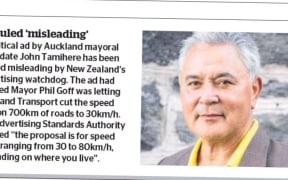




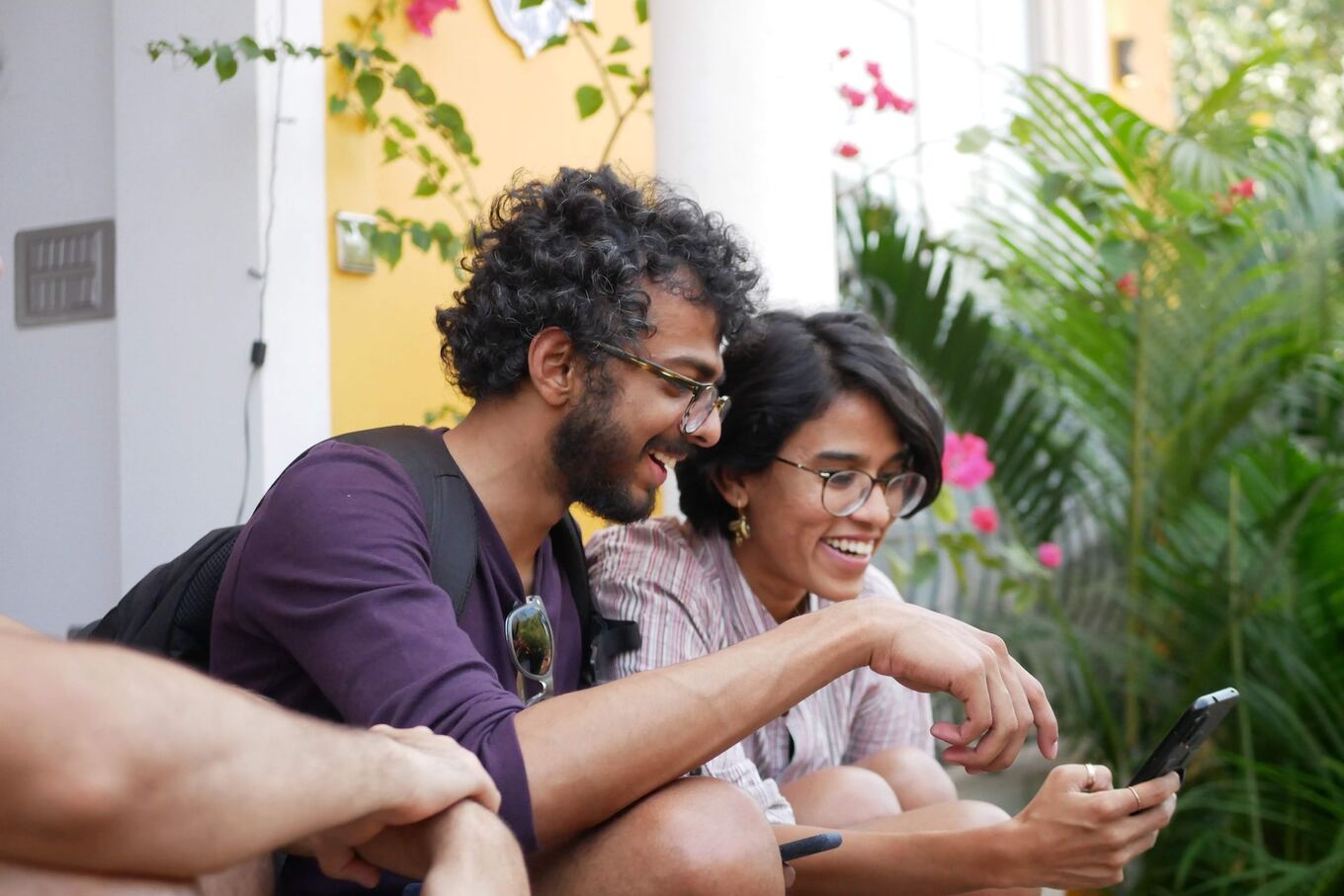 Unsplash
Unsplash People Images/Getty
People Images/Getty @veganmemo/IG
@veganmemo/IG @plantbasedlogic/IG
@plantbasedlogic/IG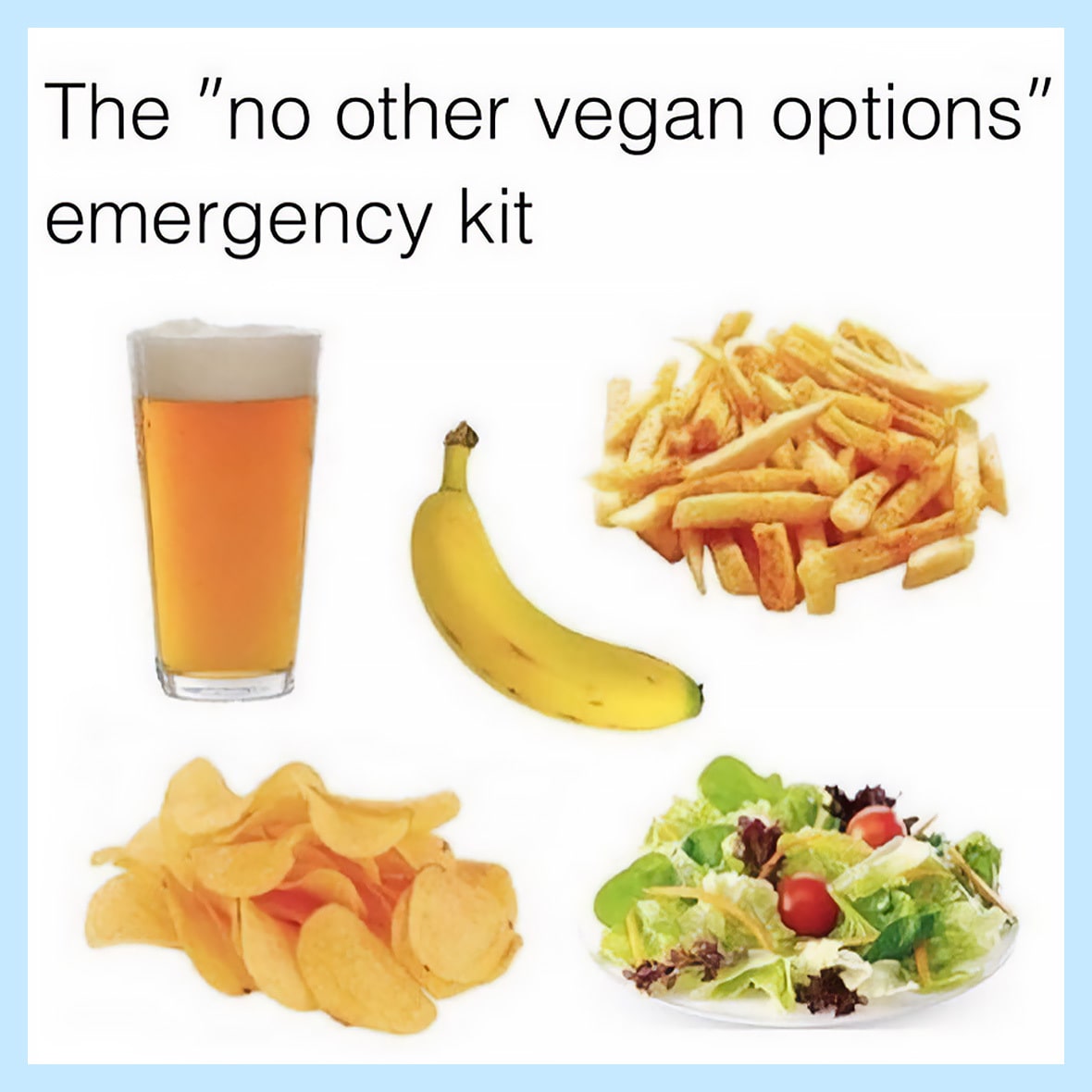 @thebestveganmemes/IG
@thebestveganmemes/IG @plantbasedbantz/IG
@plantbasedbantz/IG @brusswole_sprouts/IG
@brusswole_sprouts/IG @veganmemesworld/IG
@veganmemesworld/IG @veganshumor/IG
@veganshumor/IG @thehumaneleague/IG
@thehumaneleague/IG @vegan_sarcasm/IG
@vegan_sarcasm/IG @veganshumor/IG
@veganshumor/IG @vegan_sarcasm/IG
@vegan_sarcasm/IG @hummusmem3/IG
@hummusmem3/IG @thebestveganmemes/IG
@thebestveganmemes/IG @veganshumor/IG
@veganshumor/IG @veganmemesworld/IG
@veganmemesworld/IG Bored Panda
Bored Panda
 Dima Berlin
Dima Berlin
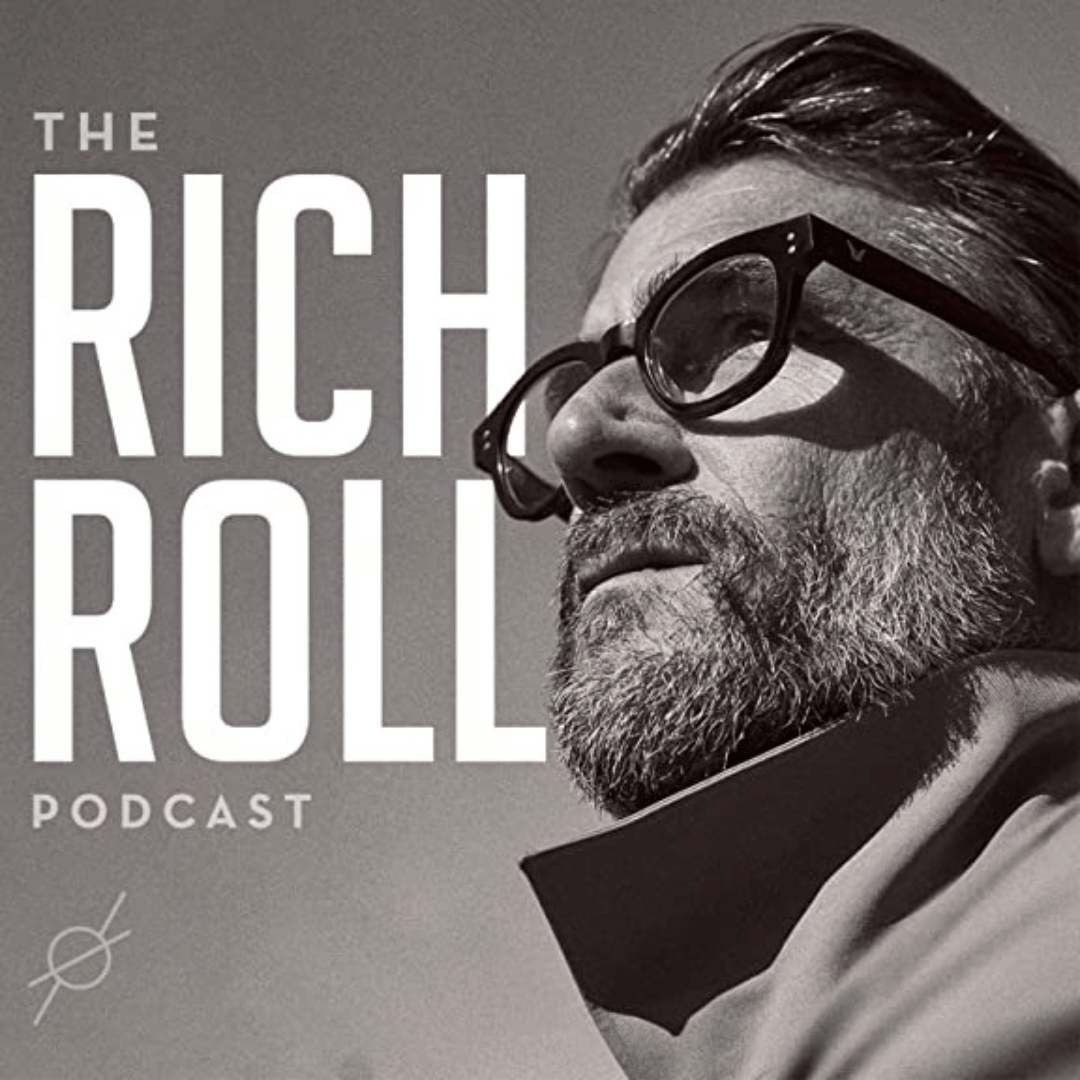











 Cottonbro Studios/Pexels
Cottonbro Studios/Pexels
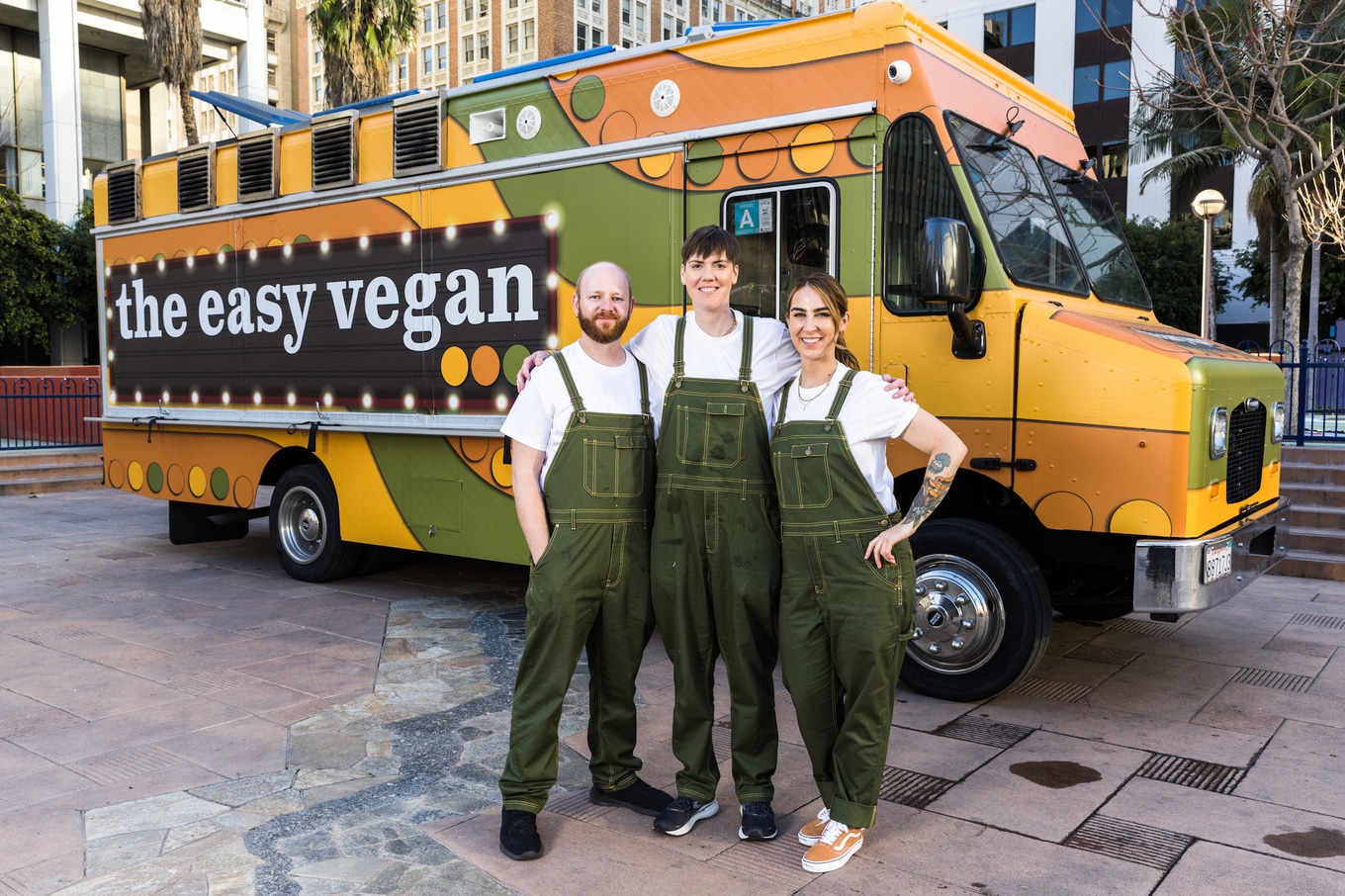 Food Network
Food Network Food Network
Food Network Carole Poirot
Carole Poirot Mama Đút
Mama Đút Chloe Coscarelli
Chloe Coscarelli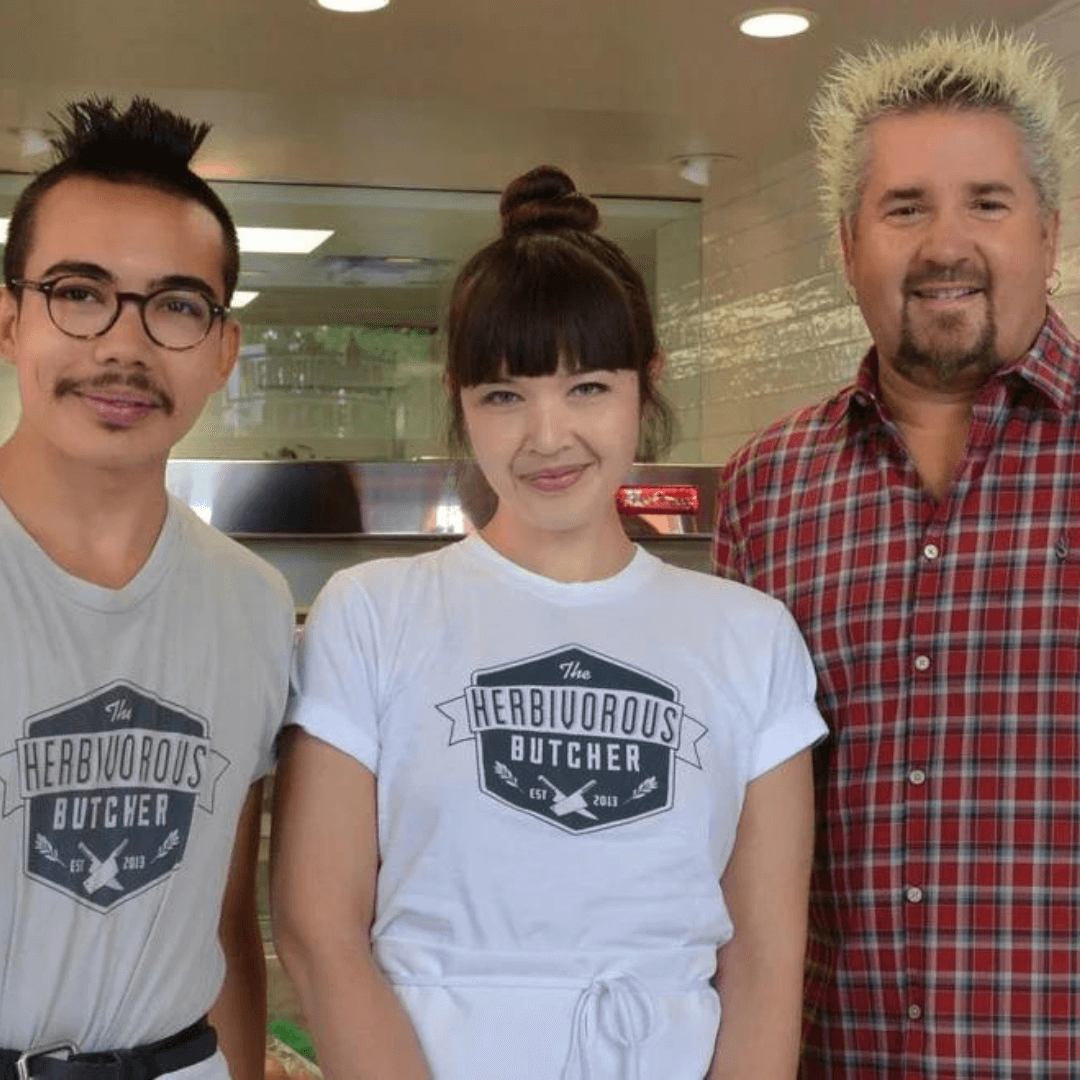 The Herbivorous Butcher
The Herbivorous Butcher Channel 4
Channel 4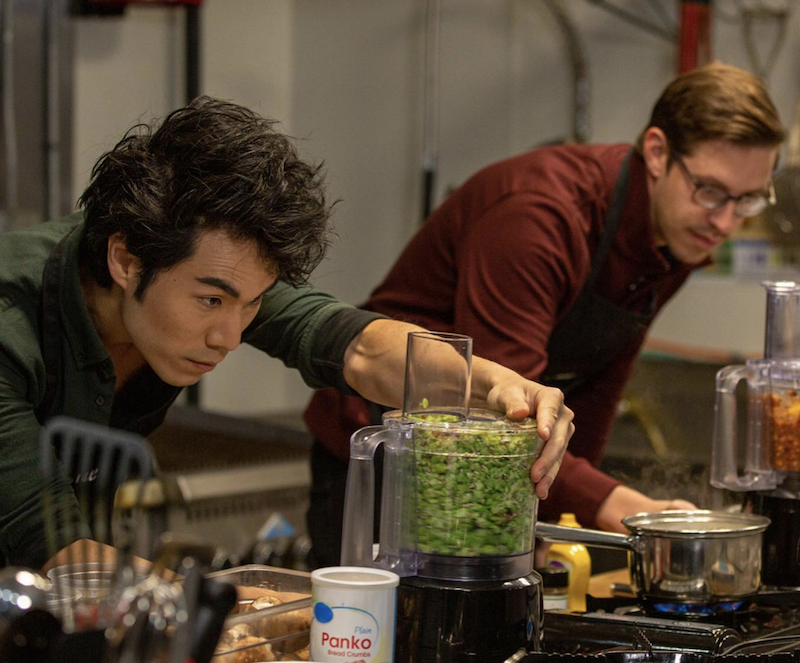 Food Network
Food Network Food Network
Food Network Sugar Rush
Sugar Rush Nadiya Bakes
Nadiya Bakes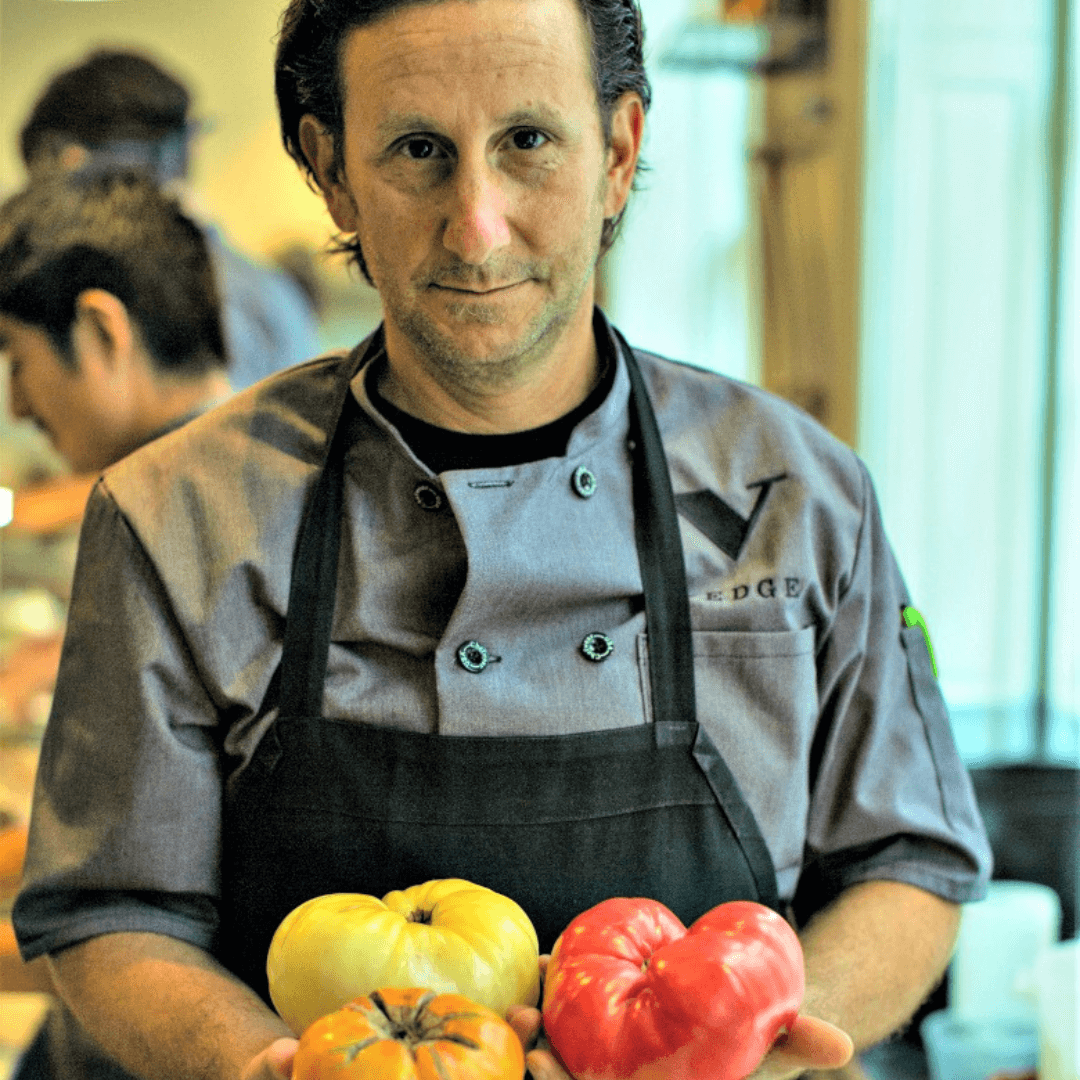 Food Network
Food Network Food Network
Food Network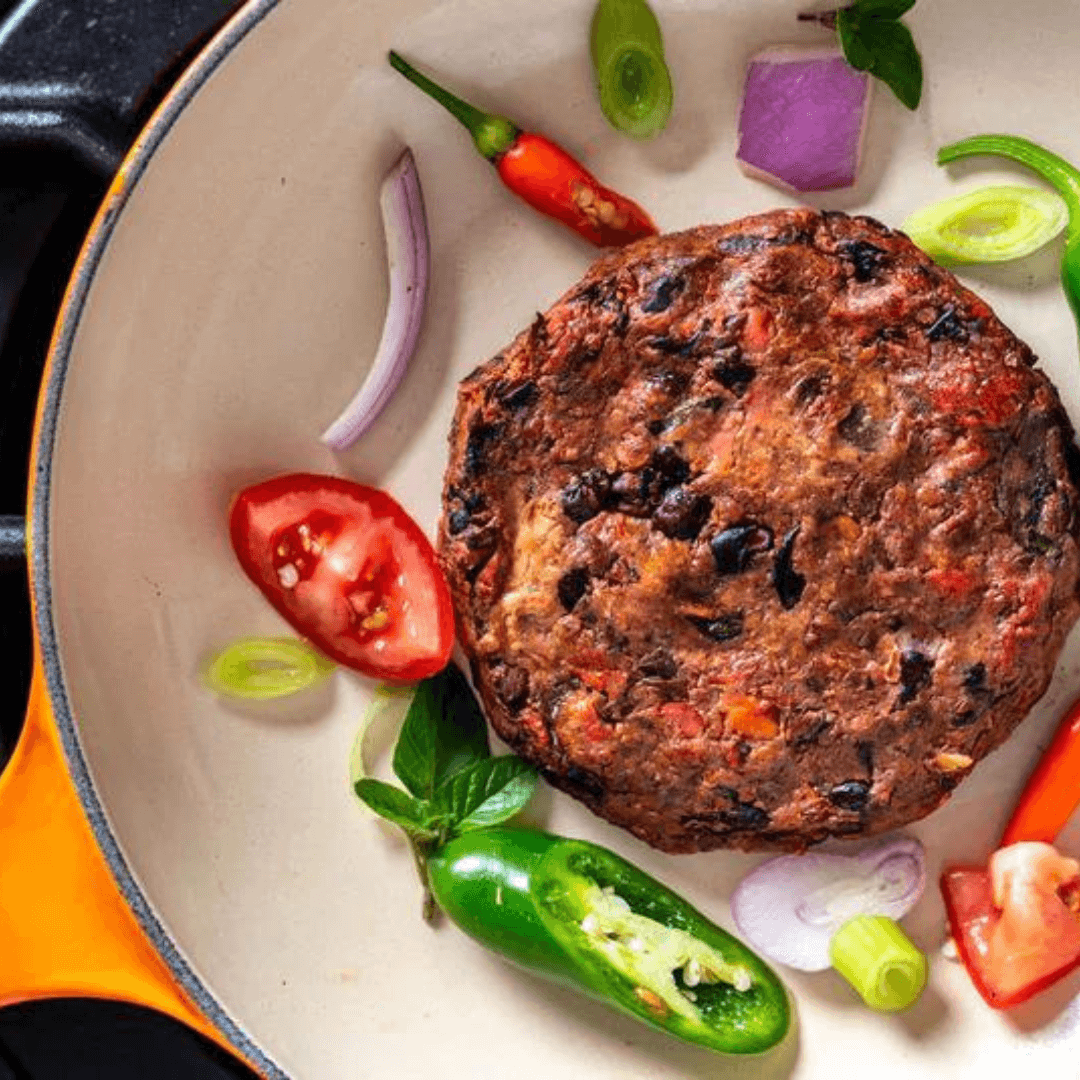 Food Network
Food Network Brandon Rouge
Brandon Rouge Food Network
Food Network Food Network
Food Network

